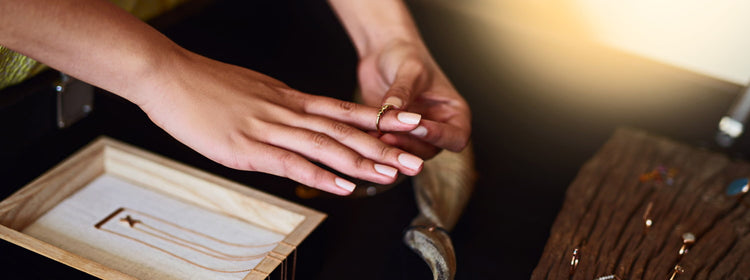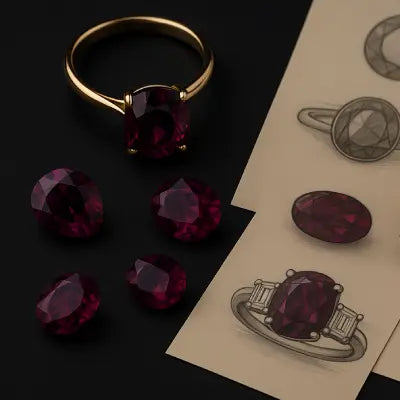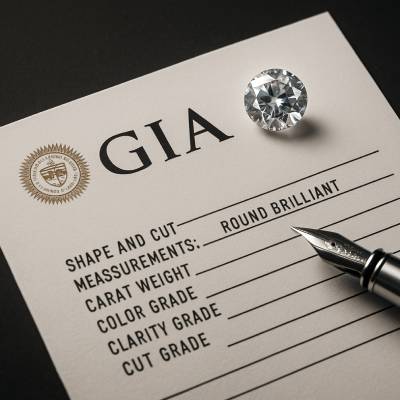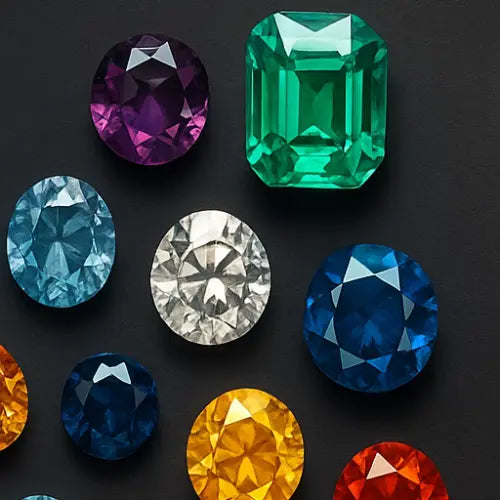Jewelry is a symbol of affection, sophistication, and individual flair. No matter if you're looking for a stunning band, a necklace, or a bold item. Getting jewelry can be a thrilling but challenging experience. With many styles, forms, and metals, it's important to make your way through this process.
Our guide is your ultimate companion in the journey. We'll delve into the key factors to consider and will go from understanding the quality of gems and metals to exploring different styles and trends. We'll also provide tips on finding reputable jewelers and negotiating prices.
By the end of this jewelry guide, you will make informed decisions. That way, you will choose jewelry pieces that not only reflect your taste, but will also stand the test of time.
Understanding the Basics of Jewelry Quality and Types
Before diving into the process, let’s understand the distinction between fine and fashion jewelry:
- Fine. Fine jewelry is crafted from precious metals, such as gold, silver, or platinum. These jewelry are adorned with real gems such as diamonds, sapphires, emeralds, and rubies. This type is often considered an investment due to its durability and timeless appeal.
- Fashion. It’s typically made with base metals and synthetic materials. Fashion jewelry is more affordable, follows current trends, and is perfect for adding a touch of glamour to your everyday outfits.
How to Buy Fine Jewelry: Metal Type:
-
Gold. It’s available in many karats (24K, 18K, 14K, 10K) that indicates its purity. Higher karat metal is more valuable but less durable.
-
Silver. It’s measured in sterling silver (92.5% pure silver). It’s often hallmarked with the "925" stamp.
-
Platinum. It’s a hypoallergenic and durable one and often used in wedding rings and other pieces.
How to Buy Jewelry: Gems:
-
The 4Cs. The quality of a diamond or hued gem is assessed based on the 4Cs — carat, hue, clarity, and cut.
-
Lab-Created vs. Natural. Lab gems are chemically identical to natural ones, however they can be cheaper.
To ensure the authenticity and quality of your jewelry pieces, look for the following certifications and hallmarks:
-
Gem Certifications. Reputable labs provide certificates for diamonds and colored gemstones. They are the Gemological Institute of America and the American Gem Society.
-
Metal Hallmarks. They indicate the metal's purity and country of origin. For example, a "750" hallmark on gold signifies 18K gold.
By understanding these fundamental aspects of quality, you can make informed decisions. This way, you will invest in pieces that bring you joy for years to come.
Selecting the Right Gemstone: A Gemstone Buying Guide
As for popular gems and their characteristics, there are:
-
Diamonds. Diamonds are popular for their brilliance and durability. They’re the most popular gem choice for wedding rings and fine jewelry. They come in many hues, such as white, yellow, pink, and blue.
-
Sapphires. Sapphires are known for their stunning blue hue. Sapphires can also be found in other hues such as pink, yellow, and orange. They’re durable and often used in rings, necklaces, and earrings.
-
Rubies. Rubies are traditionally associated with love and passion. They are prized for their deep red hue. They’re relatively hard and often used in fine jewelry.
-
Emeralds. Emeralds are associated with rebirth and growth. These precious stones are usually known for their vibrant green hue. They are relatively soft, so care must be taken when wearing emerald pieces.
According to our gemstones buying guide, when selecting a gem, consider the 4Cs:
-
Color. For diamonds, the best color grade is colorless. For colored gemstones, the intensity and purity of the color are crucial.
-
Cut. The cut refers to shape and proportions. It affects brilliance and sparkle.
-
Clarity. Clarity refers to the number and visibility of inclusions (internal flaws) and blemishes (external flaws).
-
Carat. Carat is a unit of weight used to measure gems. A larger carat weight generally means a more expensive item.
How to find hiqh-quality jewelry? For this, consider natural and lab-created gems. You can choose between them:
-
Natural. They’re mined from the earth. Natural ones are often more expensive due to their rarity and ethical considerations. However, they’re highly valued for their beauty and authenticity.
-
Lab-Created. They’re grown in a lab. These gems are chemically identical to natural ones, however, they're cheaper. They’re a sustainable and ethical alternative to natural ones.
How to Choose a Jeweler You Can Trust

Choosing the right master is important. Here are some tips to help you find a trustworthy master.
Research and Reputation:
-
Check for Certifications. Look for certifications from reputable organizations, such as the Gemological Institute of America or the American Gem Society. These certifications ensure the quality and authenticity of gems.
-
Read Reviews and Testimonials. Check online reviews and testimonials from previous clients. This helps gauge a master’s reputation for quality, service, and ethical practices.
-
Ask for References. Don't hesitate to ask friends, family, or colleagues for recommendations. Personal referrals can be invaluable.
Where Should I Buy Jewelry: Local Jewelers vs. Online Stores
Local:
-
Pros. Personalized service, ability to examine jewelry pieces in person, and potential for negotiation.
-
Cons. Limited selection, potentially higher costs.
Online:
-
Pros. Wide selection, competitive prices, and convenience.
-
Cons. Inability to examine jewelry in person, potential for shipping delays, and limited service.
Return Policies and Warranties:
-
Return Policy. Understand the master’s return policy. It includes the return policy period, conditions, and any associated fees.
-
Warranty. Inquire about the warranty coverage for jewelry pieces. It includes repairs and replacements.
-
Aftercare Services. Ask about available aftercare services such as cleaning, polishing, and resizing.
Timing Your Purchase: When is the Best Time to Buy Jewelry?
The timing can impact your budget and the selection available. Here are some of our valuable tips to help you maximize your savings and find the perfect item.
Seasonal Sales and Holidays:
-
Holiday Sales. Major holidays like Black Friday and Christmas often bring significant discounts. Keep an eye out for special offers and promotions.
-
Seasonal Sales. Summer and winter sales can be a great time to find deals on jewelry, especially at the end of the season.
-
Valentine's Day. Valentine's Day is a popular time to get pieces. However, it's often not the best time for deals. Prices may be higher and selection may be limited due to high demand.
Off-Season Guide Tips to Buying Jewelry:
-
Off-Peak Times. Consider buying during off-peak times, for example, early spring or late fall. You may find better deals and more personalized service from shops.
-
Weekday Shopping. Shopping during the week can offer more flexibility and better deals especially on weekdays.
Special Occasions and Trends:
-
Wedding Season. If you're planning a wedding, consider shopping for your engagement ring and wedding bands during the off-season. You may find better deals and have more options.
-
Anniversary Sales. Many jewelers offer special discounts and promotions around anniversaries.
-
Trend-Driven Prices. Popular trends can drive up prices for certain types of pieces. If you're not tied to a specific trend, consider buying timeless pieces. Those will retain their value.
Understand the best way to buy jewelry. Then, you can significantly save money and find the perfect piece. It will complement your style and budget. Don’t forget to do thorough research and learn current trends. It will help you to make informed decisions and avoid impulsive purchases.






